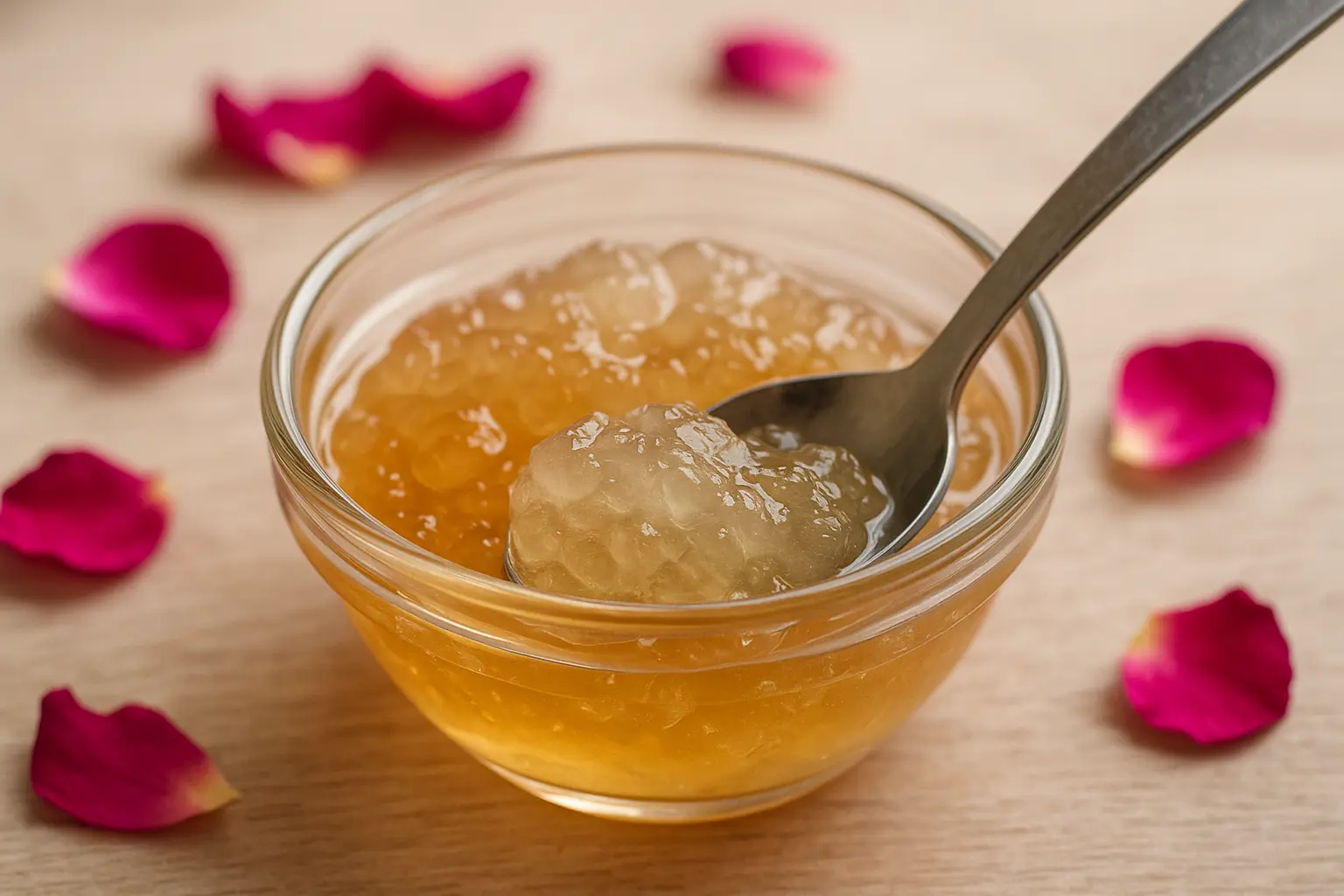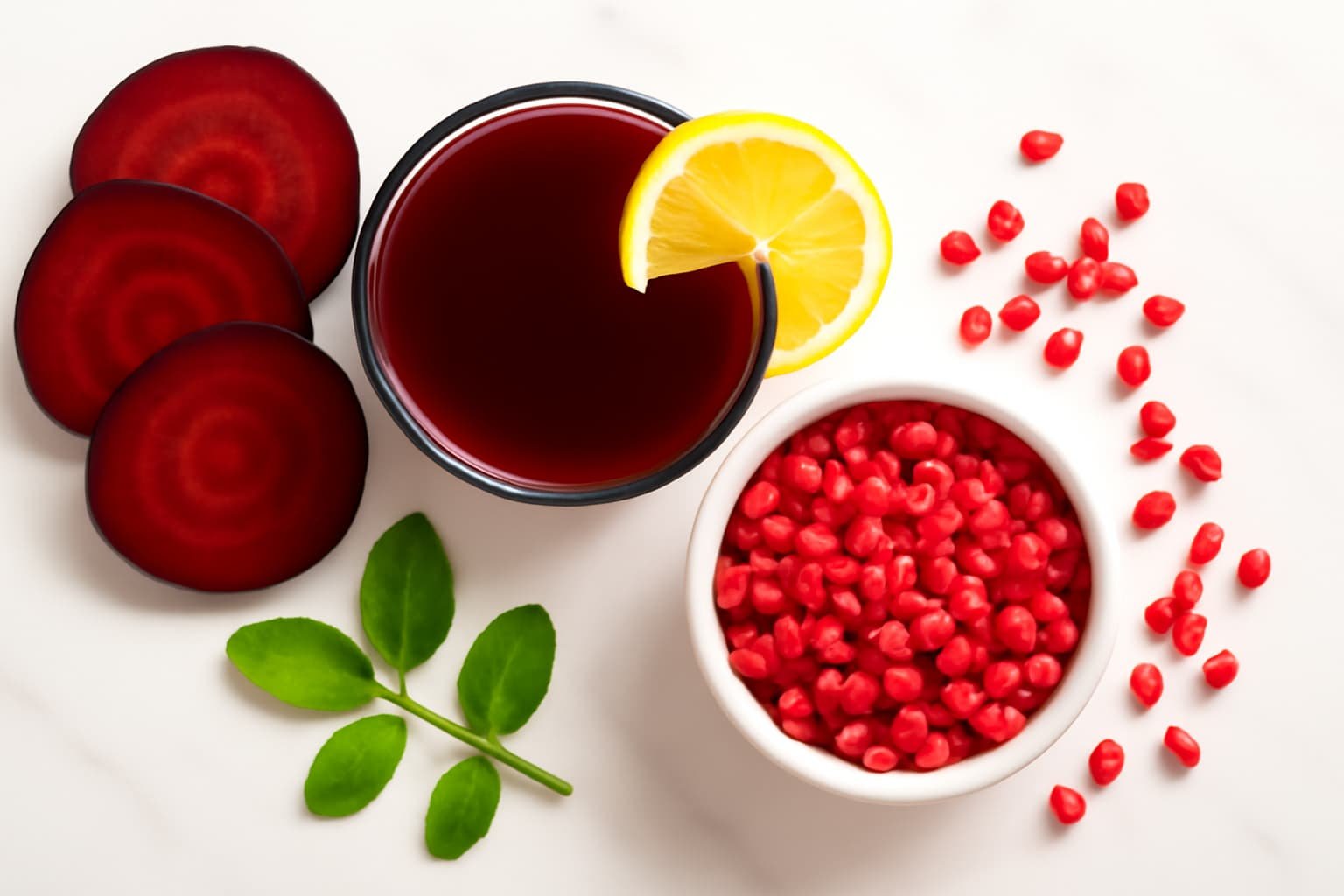Punarnavadi Kashayam Uses: Incredible Health Benefits, Ingredients, Dosage & Side Effects
They remember the first time a trusted elder gave them a warm cup of kashayam. The steam smelled earthy and calm. It felt like help had arrived.
In that quiet moment, they wondered: could this brew ease swelling? Could it support the liver and kidney? Could it bring balance back?
For many in India, the search is personal. They deal with bloat, puffy ankles, and stiff joints. When they hear about punarnavadi kashayam, they see hope. It’s ayurveda meeting real life, sip by sip.
Readers look for clear answers, not hype. They want to know how punarnavadi kashayam works. They want to know how it can help with water retention and support the liver and kidney.
This article starts with respect for tradition and an eye on evidence. It aims to guide readers on their journey.
They will learn about punarnavadi kashayam, its herbs, and the logic of Vata-Kapha balance. They will see how it may help with edema and other inflammatory concerns. Each step honors tradition while meeting today’s needs.
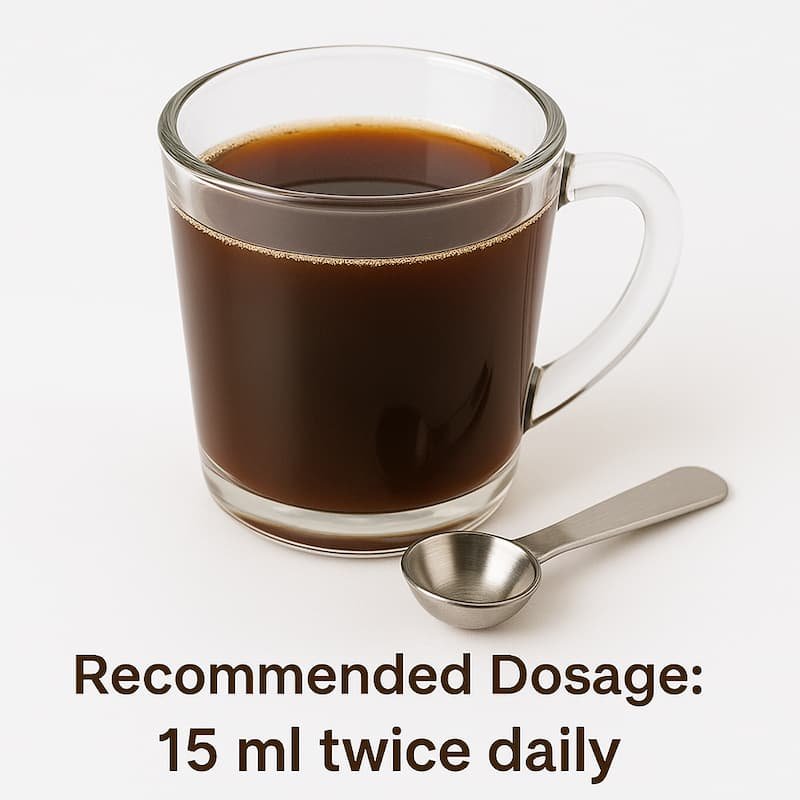
Key Takeaways
- Punarnavadi kashayam uses center on edema relief, kidney support, and liver balance through ayurveda.
- The benefits of punarnavadi kashayam often relate to gentle, natural diuretic remedies that may reduce fluid retention.
- Readers in India value kashayam for practical, daily support when the liver and kidney feel taxed.
- This ayurvedic medicine is rooted in classical wisdom while inviting evidence-informed discussion.
- Short, steady use alongside lifestyle care may help ease swelling and improve comfort.
- Understanding Vata-Kapha balance gives context for how and why this decoction is used.
- Thoughtful guidance helps set realistic expectations before exploring detailed sections ahead.
What Is Punarnavadi Kashayam? Ayurvedic decoction for kidney, liver, and edema support
There are several effective kashayams like Varanadi kashayam available in Ayurveda for kideney, liver and edema support. Punarnavadi kashayam is a special ayurvedic drink used for kideney, liver and edema support. It helps keep fluids balanced and makes tissues feel better. It’s good for the kidneys and liver, and helps with swelling.
Ayurvedic definition and classical context of kashayam (decoction)
In Ayurveda, a kashayam is a special herbal drink. It’s made by boiling herbs in water to get their good stuff. Old texts say it helps with swelling and stiffness.
It’s best taken warm to help move fluids and ease feeling heavy.
How Punarnava (Boerhaavia diffusa) shapes its natural diuretic and anti-inflammatory profile
Punarnava is great for helping with urination and swelling. When made into punarnavadi kashayam, it gets even better. It helps with digestion and opens up channels.
This makes it a top choice for kidney health. It also cools down irritation and dampness.
Vata-Kapha balancing perspective and shotha (swelling) reduction
Swelling is often caused by Kapha and Vata issues. Punarnavadi kashayam helps balance these. It moves fluids and calms movement.
This helps reduce swelling and eases pressure. It’s good for the limbs.
Key ingredients in punarnavadi kashayam: herbs, properties, and synergistic effects
Classical doctors focus on a special mix of key ingredients. They help with fluid balance, tissue congestion, and joint comfort. This mix is a polyherbal decoction. Each herb adds its own property and boosts the antiinflammatory effect.
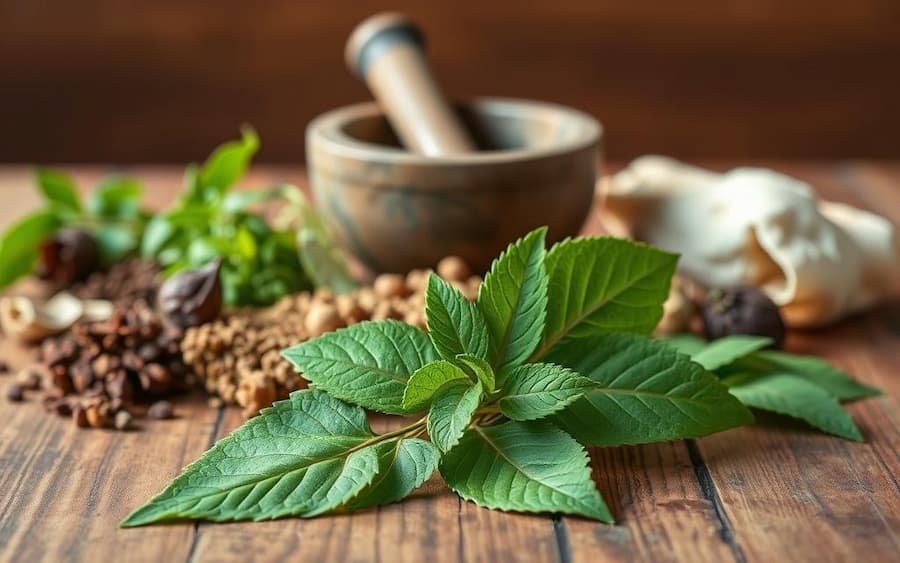
Punarnava (Boerhaavia diffusa) for edema and urinary disorders
Punarnava is at the heart of the formula. It helps with urinary flow and reduces water retention. Its diuretic and antiinflammatory actions are key. It helps move fluid out and soothes irritated tissues.
Supportive herbs often included and their antiinflammatory actions
The formula includes herbs that help joints and digestion. Guggulu detoxifies the musculoskeletal system and soothes Vata. Dashamoola supports stiffness.
Shallaki (Boswellia serrata) reduces joint swelling. Trikatu and Pippali boost digestion and clear Ama. This improves how well the key ingredients work.
Polyherbal synergy: why Ayurvedic combinations can outperform single herbs
A polyherbal approach fills gaps left by single herbs. The mix includes herbs for circulation, digestion, and joint comfort. This design offers better antiinflammatory results than single herbs.
| Herb | Classical Role | Primary Property | Target Area | How It Supports Synergy |
| Punarnava (Boerhaavia diffusa) | Core diuretic and edema relief | Fluid regulation, antiinflammatory | Kidneys, urinary tract, tissues | Initiates drainage; anchors the action of all punarnavadi kashayam ingredients |
| Guggulu (Commiphora mukul) | Vata pacifying joint support | Detox, antiinflammatory | Joints and connective tissue | Clears waste to let key ingredients penetrate deeper |
| Dashamoola | Stiffness and swelling relief | Vata balancing | Musculoskeletal system | Stabilizes movement while drainage proceeds |
| Shallaki (Boswellia serrata) | Joint comfort | Anti-swelling, antiinflammatory | Synovial and periarticular tissues | Modulates inflammatory mediators for smoother motion |
| Trikatu (Black pepper, Long pepper, Ginger) | Agni kindle and Ama clearance | Bioavailability enhancement | Gut and metabolic fire | Improves absorption so ingredients in punarnavadi kashayam include stronger uptake |
| Pippali (Piper longum) | Respiratory and digestive aid | Warming, carminative | GI tract, channels | Opens pathways, complementing the polyherbal design |
The ingredients in punarnavadi kashayam work together. They move fluid, soothe joints, and aid digestion. This balanced mix is why many seek it for its antiinflammatory and drainage benefits.
Punarnavadi kashayam uses
Punarnavadi is used in traditional medicine for fluid balance and comfort. In India, doctors use punarnavadi kashayam to treat water retention and puffiness. It helps with swelling and supports the liver and urinary system.
Many people use punarnavadi for edema in Vata-Kapha conditions. It helps with ankle swelling, neck stiffness, and post-illness bloat. It works as a diuretic and anti-inflammatory.
In women’s health, punarnavadi kashayam is used for water retention. It’s paired with digestive and hormonal aids to reduce bloat. It’s also used for musculoskeletal issues to ease pain and stiffness.
Kidney and urinary health are key areas where punarnavadi is used. It’s helpful for slow urination and morning puffiness. It’s also used for abdominal fullness that might be due to fluid buildup.
| Use-Case | Typical Signs | How Punarnavadi Fits | Practical Note |
| Edema and shotha | Pitting swelling, heaviness, tight rings | Targets fluid mobilization to reduce swelling as an ayurvedic treatment for edema | Track morning vs evening changes to gauge response |
| Kidney–urinary support | Low output, frequency without burn, puffiness | Leverages diuretic action among key punarnavadi kashayam uses | Hydration quality matters; avoid excess salt |
| Liver-related water retention | Abdominal fullness, ankle swelling, fatigue | Addresses Kapha congestion; adjunct to dietary cleanup | Focus on lighter meals and early dinners |
| Vata-Kapha cervical stiffness | Neck tightness with fluid stagnation | Supports circulation where fluid load worsens stiffness | Pair with gentle neck mobility and posture care |
| Inflammatory bloat with discomfort | General puffiness, soft-tissue soreness | Polyherbal approach to soothe inflammation and use fluid clearance | Monitor sodium and refined carbs that hold water |
Punarnavadi is used for fluid overload and inflammation. It helps move water, supports organs, and reduces swelling without harsh methods.
Punarnavadi kashayam benefits for kidney health and urinary disorders
In India, people often use punarnavadi kashayam for kidney support. It helps with swelling, burning urine, or slow flow. The mix focuses on Punarnava, which helps with fluid balance and lightens Kapha.
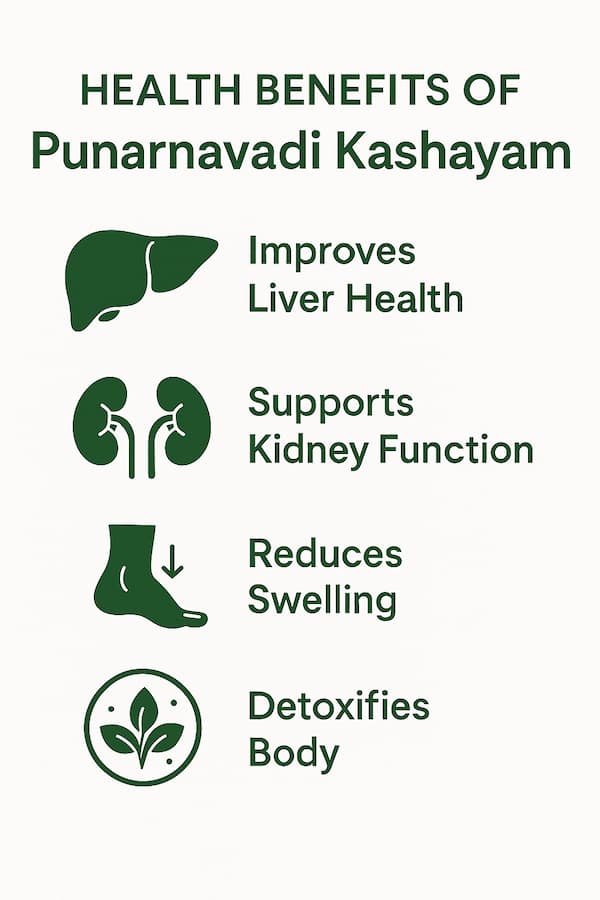
Punarnavadi kashayam benefits for kidney health and urinary disorders
Natural diuretic remedies to reduce water retention and support urinary flow
This decoction helps move fluid and ease urinary issues. It may reduce swelling and help the kidney clear waste. Users often drink warm water and eat less salt with it.
Ayurvedic medicine for kidney health and stones: where it may fit
Punarnavadi is used with Kapha-balancing meals and herbs for kidney stones. It helps with flow and stone passage under a BAMS doctor’s advice. For ongoing issues, it’s part of a plan that includes diet, exercise, and sleep.
Does Punarnavadi Kashayam really work for kidney problems? Evidence-informed view
Many ask if punarnavadi kashayam works for kidney issues. While there’s limited research, its herbal mix could help with inflammation and fluid. Best results come when used with Kapha-aware meals and medical guidance.
| Focus Area | Potential Role of Punarnavadi | How People Commonly Use It | What to Monitor | Water retention |
| Supports diuresis to lighten edema and aid kidney fluid handling | Short courses under clinician guidance with reduced salty snacks | Body weight, ankle girth, frequency of urination | ||
| Urinary disorders | ||||
| Soothes irritation and promotes clearer urinary flow | Warm doses after meals with hydration reminders | Burning, urgency, nighttime trips | ||
| Stone tendencies | ||||
| Assists gravel passage while targeting Kapha-heavy sludge | Ayurvedic medicine for kidney stones punarnavadi paired with diet review | Pain pattern, urine clarity, stone size reports | ||
| Advanced concerns | ||||
| Adjunctive only; careful oversight in kidney failure settings | Specialist-led plans, labs, and individualized dosing | Creatinine, swelling pattern, energy levels |
Key takeaway: punarnavadi kashayam for kidney works best as part of a supervised, lifestyle-aware approach, mindful of stone risk and the spectrum from mild irritation to kidney failure.
Punarnavadi kashayam for liver detox, hepatitis-related swelling, and metabolic balance
In Ayurveda, punarnavadi kashayam is used for liver detox. It helps when you feel tired and swollen due to slow metabolism. It’s seen as a way to clear blockages and improve digestion without harming the body.
Beneficial in hepatic fluid overload is how it helps with swelling from liver issues. It’s good for when your legs, belly, or face feel too heavy. It helps move fluid and keeps your appetite and energy up.
Beneficial in liver disorders and edema due to liver disorders
Punarnava blends are picked for liver problems and swelling. They help move fluid and ease pressure. This helps reduce swelling and supports regular waste removal.
Agni support and Ama clearance: detox lens from Ayurveda
Boosting agni is key for detox. When digestion is strong, less waste builds up in the liver. Eating simple, warm foods and using light oils helps keep metabolism steady.
Doctors also use Arogyavardhini Vati for liver health. They suggest eating bitter and astringent foods. This helps digestion and waste removal without overworking the body.
Link to inflammation, Kapha congestion, and fluid accumulation
Edema is linked to inflammation and Kapha buildup. Polyherbal formulas help tackle swelling and heat. As blockages clear, tissues feel lighter and moving gets easier.
This approach ties detox, agni, and ama together. It also fights inflammation that makes liver issues worse. With regular routines and gentle activities, it aims for better fluid balance.
Punarnavadi kashayam for edema and swelling relief
In Ayurveda, shotha means Kapha build-up, weak Agni, and blocked Vata. This slows down fluid movement. Punarnavadi kashayam helps clear channels and supports diuresis.
It reduces water retention and keeps tissues comfortable. Clinicians often pair it with warm, light meals and gentle walking. They also suggest Kapha-reducing routines.
These steps help reduce puffiness and ease tightness. They support steady circulation in treating edema.
Polyherbal design is key in treating shotha. Multiple herbs work together to reduce inflammation and fluid stasis. This offers more support than a single diuretic.
In practice, this approach helps without overtaxing the system. Care plans may include mild sudation and oiling therapies. These open srotas and ease stiffness.
With these supports, punarnavadi kashayam fits into a structured pathway. It reduces fluid load, steadies Vata, and sustains daily comfort in treating edema.
Punarnavadi kashayam for weight loss and weight management
Punarnavadi kashayam is often picked for weight loss. It helps with heaviness, puffiness, and Kapha congestion. It works well with a steady diet and daily exercise.
Fluid overload vs fat loss: realistic expectations
This decoction may help with water retention, not fat loss. Early weight loss might be water, so the scale can change quickly. True results take time, steady eating, and activity.
How diuretic and anti-inflammatory effects may improve bloat and comfort
It can ease water retention and inflammation. This reduces belly tightness and ankle puffiness. It makes walking easier, helping with movement and weight goals.
Lifestyle pairings: diet, yoga, and daily routine to enhance results
Warm, home-cooked meals boost Agni and control hunger. Eat steady portions, light dinners, and avoid cold, heavy foods. These choices help with weight loss and keep energy up.
Use yoga like Surya Namaskar, Bhujangasana, and Tadasana for posture and breath. Add gentle pranayama like Anulom Vilom, regular sleep, and Abhyanga on rest days. In this routine, punarnavadi kashayam helps, while diet and yoga keep the plan on track.
Punarnavadi kashayam for joint pain and inflammatory conditions
In India, many people use Ayurveda for joint pain. Punarnavadi kashayam is a choice when joints swell or feel stiff. It helps reduce swelling and fluid without making you sleepy.
Relevance of anti-inflammatory polyherbal formulations in arthritis
Polyherbal blends help with arthritis. They work on TNF-α, IL-6, and NF-κB, key to inflammatory issues. This eases pain and stiffness, helping you move better.
Punarnavadi kashayam is good for swelling. It’s used with warm treatments to keep blood flowing and fight inflammation.
Vata-driven stiffness and Kapha congestion: Ayurvedic angle on joint pain
Ayurveda says stiff pain is Vata, and heavy pain is Kapha. When both happen, you might feel stiff in the morning and heavy at night. A light, warming plan helps Vata, and gentle draining helps Kapha.
Punarnavadi kashayam helps with swelling and blood flow. It works with oils, stretching, and steam to ease inflammatory swelling in joint.
Positioning with other classical supports like Guggulu and Dashamoola
Classical practice often uses punarnavadi with guggulu like Yogaraja Guggulu for arthritis. For Vata pain, dashamoola is used for deep comfort.
This approach makes punarnavadi kashayam key for fluid balance. Guggulu and dashamoola focus on tissue tone and inflammation. Together, they help with Vata-Kapha joint pain.
| Formulation | Primary Action | Best Fit in Joint Complaints | Notable Notes |
| Punarnavadi Kashayam | Edema relief, circulatory support, mild anti-inflammatory | Swollen joints with heaviness and fluid retention | Complements the treatment of inflammatory edema and stiffness |
| Guggulu Formulations (e.g., Yogaraja Guggulu) | Tissue rejuvenation, structural support, anti-inflammatory | Chronic arthritis with stiffness and reduced range | Pairs well with kashayam when mobility is limited |
| Dashamoola | Vata pacifying, deep tissue comfort, nervous system support | Dry, achy pain patterns with variable intensity | Useful in Vata-dominant joint pain and nightly flares |
Punarnavadi kashayam for PCOD, hormonal balance, and women’s wellness
Women with PCOD often feel bloated and puffy after eating. Punarnavadi kashayam helps with this by reducing fluid buildup. It also helps balance hormones.
Ayurvedic doctors recommend diet, yoga, and breathing exercises for better sleep and energy. This decoction helps with water retention. It also supports menstrual cycles and mood.
When Kapha and Ama are a problem, doctors might add certain herbs. These include Shatavari, Ashwagandha, Chandraprabha Vati, and Triphala. They help with metabolism, stress, and digestion.
While there’s not much research on PCOD, the idea is to reduce Kapha and help with fluid. Under a doctor’s watch, it can help with bloating and daily activities.
People with PCOD should eat light meals and avoid heavy dinners. Spices like cumin and ginger are good. Yoga and walking help with fluid balance.
Note: Personalization matters. Regular reviews with a qualified Ayurvedic physician help tailor dosage and timing to changing symptoms.
How to use Punarnavadi Kashayam: dosage, timing, and preparation
Learning how to use punarnavadi kashayam is key to following Ayurveda. It’s about the right amount, when to take it, and simple ways to make it. Anyone in India can do this with help from an Ayurvedic doctor.
Punarnavadi kashayam dosage for adults and children
Doctors adjust the dosage based on age, health, and strength. Adults usually take it once or twice a day. Kids need a doctor’s check and a smaller dose, watched closely.
Start with a small amount and adjust as needed. Keep an eye on sleep, urine, and stool for a week. This helps fine-tune the dosage.
Best time to drink punarnavadi kashayam and how to use it with meals
Drink it in the morning and evening, on an empty stomach. Or 30 minutes before meals. This helps it absorb better and avoids mixing with food.
If you’re sensitive, try it after a light snack. Drinking warm water, eating light, and walking can help. These steps make it easier to stick to the routine.
How to prepare punarnavadi kashayam at home step by step
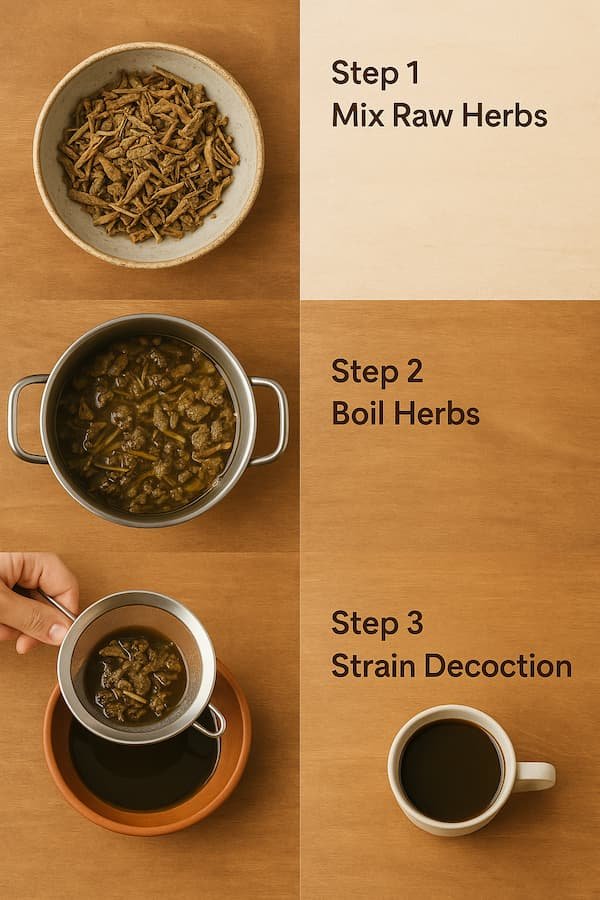
- Measure coarsely powdered herbs as advised.
- Add water based on standard water ratios, bring to a gentle boil.
- Simmer until reduced to the target volume, then strain.
- Use warm, fresh decoction for each dose and record dosage and time for consistency.
Learning to make punarnavadi kashayam at home? Keep your pot clean, heat steady, and log your batches and times.
How to make punarnavadi kashayam at home: decoction basics and water ratios
For homemade punarnavadi kashayam, use the kwatha method. A good start is 1 part herb to 16 parts water, then reduce to 1/8th. Doctors might adjust these ratios and times based on your health and goals.
Strain through a fine cloth to remove solids. Serve warm. Best to use it within a day to keep the flavor and strength.
| Aspect | Guidance | Notes | Dosage pattern |
| Divided doses once or twice daily | Adjust with physician advice for adults and children | ||
| Timing | |||
| Morning and evening; 30 minutes before meals | Empty stomach often preferred for bioavailability | ||
| Water ratios | |||
| 1 part herb : 16 parts water; reduce to 1/8th | Classic kwatha method; modify as clinically directed | ||
| Preparation steps | |||
| Boil, simmer, reduce, strain, serve warm | Track batch size, make and intake time for consistency | ||
| Diet and routine | |||
| Light, Kapha-reducing meals; warm fluids; gentle activity | Supports effects and comfort during use |
Safety, contraindications, and punarnavadi kashayam side effects
Punarnavadi kashayam is a diuretic-leaning Ayurvedic decoction. It’s important to get a doctor’s advice before using it. Most people don’t have many side effects, but caution is needed because it can affect fluids and electrolytes.
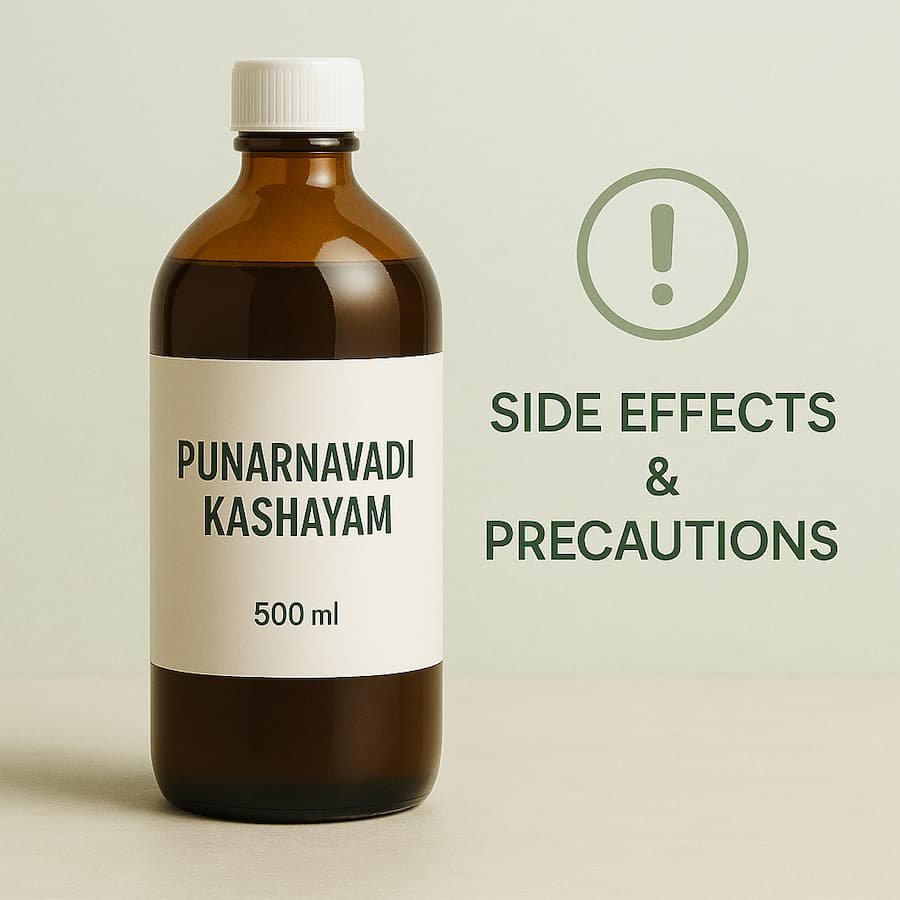
Who should avoid it: pregnancy, severe dehydration, and specific conditions
Doctors usually don’t recommend strong formulas during pregnancy. If you’re pregnant, you should talk to a doctor about punarnavadi kashayam. It can affect fluid balance.
People with severe dehydration, acute infections, or kidney problems should not use it without a doctor’s advice. It’s not safe for them.
Those with uncontrolled diabetes or high blood pressure should first get their condition under control. It’s not safe for them because it can affect blood pressure, blood sugar, or kidney function. Older adults and people on many medicines need to be watched closely.
Drug-herb cautions for diuretics and antihypertensives
Punarnavadi kashayam can make diuretics work stronger. Taking it with blood pressure medicines can lower blood pressure too much. This is dangerous, so it’s best to have a doctor and an Ayurvedic expert work together.
Start with a small dose and slowly increase it. Check blood pressure, pulse, and weight often. Don’t use it with strong diuretics, if you have electrolyte imbalances, or if your edema is changing fast.
Signs of intolerance and how to adjust use safely
Watch for signs like dizziness, too much thirst, dry mouth, or feeling tired. Stomach problems, bloating, or cramps can also happen. These usually get better if you take less of the medicine and eat something first.
If these problems don’t go away, stop using it and see a doctor. Drink more water, eat foods with balanced salts, and check with your doctor about other medicines. If you’re pregnant, any problem means you should see a doctor right away. With careful use and the right advice, many people do well with it.
Buying guide: best punarnavadi kashayam brands in India 2025 and how to choose
In India 2025, shoppers look at purity, dose clarity, and how well it works. They compare liquid and tablet forms in Ayurvedic products. They also read reviews and check if the brand is certified.
Quality markers: sourcing, standardization, and label transparency
- Look for GMP-certified makers that share herb sources and batch numbers.
- Make sure Punarnava is listed clearly, with the right ratio and 2025 date.
- Check for batch tests, reports on microbes and heavy metals, and dosage info for adults and kids.
- Choose a brand that lists what’s in the tablet and the strength of the liquid kashayam.
Punarnavadi kashayam reviews and what to look for
- Read reviews for relief from swelling, urinary issues, and daily use.
- Notice comments on taste in liquid kashayam and how easy it is to take a tablet.
- Look for consistent praise or complaints in many reviews.
- Value advice from doctors that fits your health and lifestyle in 2025.
Liquid kashayam vs tablet forms and when each is preferred
- Liquid kashayam is good for quick absorption and traditional taste; it’s best with meals.
- Tablets or kwath tablets are for those on the go, who want consistent doses, or dislike strong tastes.
- Both forms from Kairali or similar brands can work, but your doctor’s advice and how you feel are key.
When choosing the best punarnavadi kashayam brands in India 2025, check the source, standard, and label. Compare brands based on purity, decoction strength, and user feedback to make a smart choice.
Comparisons and related formulations
Choosing between Ayurvedic options is easier when you compare their main actions, safety, and what they aim to achieve. People often wonder about punarnavadi kashayam vs punarnavadi mandur. They also compare punarnavadi kashayam with other diuretics. We aim to show the differences, similarities, and how they fit Vata-Kapha conditions.
Punarnavadi kashayam vs punarnavadi mandur: anemia, edema, and use-cases
Punarnavadi kashayam is a decoction that helps with fluid mobilization and inflammation. Punarnavadi Mandur adds iron, making it better for anemia with swelling. For simple edema, kashayam is often chosen. But for edema with fatigue or low iron, mandur is better.
Both options help with water retention and feeling heavy. But they differ in nutrients. Kashayam focuses on diuresis, while mandur supports blood building.
Punarnavadi kashayam for kidney vs other diuretics: strengths and limits
When it comes to kidneys, punarnavadi kashayam has its own strengths. It helps with Kapha congestion and Vata irritation, improving urine flow. It offers broader symptom relief than single-agent diuretics.
But, it has limits. Synthetic diuretics have clear dosing and strong evidence. Evidence for kashayam varies, and dosing needs a doctor’s guidance. This is why people compare and adjust under medical supervision.
Pairing with Ayurvedic treatment for edema, cervical stiffness, and Vata-Kapha conditions
For edema with cervical stiffness, Ayurvedic treatment can help. Warm oil massages and steam treatments reduce tightness. Localized treatments like Greeva Basti soothe, while internal treatments like Yogaraja Guggulu address Vata-Kapha.
These treatments work together with the decoction and gentle neck exercises. They aim to reduce fluid, loosen tight fascia, and calm irritation. This is useful when comparing options versus layered treatments.
| Aspect | Punarnavadi Kashayam | Punarnavadi Mandur | Other Diuretics (vs) | Primary Focus |
| Diuretic action with anti-inflammatory support | Edema relief with iron support for anemia | Rapid fluid removal; narrower symptom scope | ||
| Best For | ||||
| Edema, mild urinary sluggishness, Kapha congestion | Edema with low hemoglobin or fatigue related to anemia | Acute fluid overload requiring standardized dosing | ||
| Constitution Fit | ||||
| Balances Vata-Kapha conditions | Balances Vata-Kapha while supporting blood | Constitution-neutral; symptom-led | ||
| Strengths | ||||
| Polyherbal synergy; digestive comfort; versatile use | Dual action: diuresis plus iron replenishment | Predictable potency; clear protocols | ||
| Limits | ||||
| Variable evidence; needs tailored dosing | Not ideal if iron is unnecessary | May not address inflammation or stiffness | ||
| Useful Pairings | ||||
| Abhyanga, Swedana, Yogaraja Guggulu, Dashamoola | Iron-rich diet, gentle activity, warm compress | Electrolyte monitoring, diet-based sodium control | ||
| Neck and Spine Context | ||||
| Adjunct in cervical stiffness with edema | When stiffness coexists with anemia signs | Limited effect on musculoskeletal tension |
Note: Plans should reflect current labs, symptoms, and medical advice. This is important when comparing multi-herb decoctions vs single-agent diuretics.
FAQs
What is Punarnavadi Kashayam and what are its main uses?
Punarnavadi Kashayam (aka Punarnavadi Kwath/Kashaya/Kadha) is a classical Ayurvedic decoction traditionally used for shotha (edema/swelling), mutra-vikara (urinary issues), and fluid retention. It’s valued for diuretic, anti-inflammatory, and liver-supportive actions.
What are the top health benefits of Punarnavadi Kashayam?
Traditionally: reduces water retention and swollen feet, supports kidney and urinary tract health, aids liver function, and may soothe inflammatory swelling in joints and tissues.
What are the key ingredients in punarnavadi kashayam?
The key herb is Punarnava (Boerhavia diffusa). Classical variations often include diuretic and detox-supportive herbs like Gokshura (Tribulus), Musta (Cyperus), Daruharidra (Berberis), Devadaru (Cedrus), Guduchi (Tinospora), and others. Exact composition varies by brand/classical reference. These ingredients are combined to create a powerful herbal remedy that supports kidney and liver function while addressing issues like water retention and inflammation.
How to prepare punarnavadi kashayam?
To prepare punarnavadi kashayam, boil the required ingredients in water to create a decoction. This process typically involves simmering the herbs until the liquid reduces to the desired concentration, making it a potent ayurvedic remedy.
What is the recommended Punarnavadi Kashayam dosage for adults?
General classical dosing for kashayam is modest (often 10–30 ml of ready decoction with warm water, 1–2 times daily). Follow your physician/label directions.
Are there any side effects of punarnavadi kashayam?
While punarnavadi kashayam is generally considered safe, some individuals may experience mild side effects such as gastrointestinal discomfort or allergic reactions. It is important to monitor your body’s response and consult with a healthcare professional if any adverse effects occur.
Is punarnavadi kashayam useful in cases of hepatitis?
Yes, punarnavadi kashayam is useful in cases of hepatitis due to its properties that support liver function and reduce inflammation. It can aid in the management of liver disorders and help alleviate symptoms associated with this disease.
Can punarnavadi kashayam help with joint pain?
Punarnavadi kashayam may help with joint pain due to its anti-inflammatory properties. By addressing inflammation in the body, it can provide relief from pain and improve overall joint health, making it a beneficial remedy for those suffering from joint issues.
How does punarnavadi kashayam work in the body?
Punarnavadi kashayam works by balancing the doshas in the body, particularly by supporting the kidney and liver functions. Its diuretic effect helps in reducing water retention and edema, thus promoting overall health and well-being.
Is Punarnavadi Kashayam good for swollen feet and ankles?
Yes, it’s commonly used for pedal edema related to dietary sodium, prolonged sitting, or heat. Rule out cardiac, renal, or venous causes with a doctor.
What about Punarnavadi Kashayam for kidney health and creatinine levels?
It supports urinary flow and kidney comfort, but it is not a proven treatment to lower creatinine. Do not self-treat chronic kidney disease; seek medical care.
What are Punarnavadi Kashayam uses for UTI and burning urination?
Helpful as supportive care for urinary irritation due to its mutrala action. UTIs require medical diagnosis and appropriate antimicrobial therapy.
Is Punarnavadi Kashayam good for kidney stones?
It may assist urine flow and flushing of tiny crystals but isn’t a primary litholytic remedy. For stones, formulations with Varuna/Gokshura are more typical.
What are the uses of Punarnavadi Kashayam for fatty liver and liver swelling?
Traditionally used to support liver function and fluid balance; evidence in NAFLD is limited. Use alongside medical advice, diet, weight management, and exercise.
Can we take Punarnavadi Kashayam daily? For how long?
Short to medium-term use (e.g., 4–12 weeks) is common for edema support. Long-term use should be monitored by a clinician.
Should I take Punarnavadi Kashayam before or after food?
Traditionally taken on an empty stomach or 30 minutes before meals unless it irritates your stomach—then take after food.
Is Punarnavadi Kashayam safe during pregnancy or breastfeeding?
Not recommended unless specifically prescribed by a qualified physician.
Does Punarnavadi Kashayam interact with allopathic medicines?
Potential interactions with diuretics, antihypertensives, lithium, and drugs affected by electrolytes (e.g., digoxin). Consult your doctor.
Punarnava Mandur vs Punarnavadi Kashayam: what’s the difference?
Punarnava Mandur is an iron-based tablet for anemia/edema in Ayurveda. Punarnavadi Kashayam is a diuretic decoction focused on fluid balance and urinary/liver support. They serve different purposes; do not combine without guidance.
Is punarnavadi kashayam suitable for everyone?
While punarnavadi kashayam is a natural herbal remedy, it may not be suitable for everyone, especially pregnant women or individuals with specific health concerns. It’s important to consult with an ayurvedic practitioner before starting any new treatment.
Conclusion
Punarnavadi kashayam helps with swelling, supports the kidneys and liver, and aids in water retention. Its main herb, Punarnava, has natural diuretic and anti-inflammatory properties. This formula also helps balance Vata-Kapha and clears Agni-Ama.
Its benefits include better water balance, comfort, and movement. But, it’s important to follow the right dosage and timing. An Ayurvedic doctor should guide you.
It’s key to watch for side effects and not use it during pregnancy or severe dehydration. Also, be careful if you’re taking diuretics or blood pressure medicines. A diet that reduces Kapha, good sleep, and light exercise can enhance its effects.
For joint and inflammation issues, combining it with Guggulu and Dashamoola is beneficial. This combination is supported by research on rheumatoid arthritis. In India, you can find it in brands like Himalaya Wellness, Kerala Ayurveda, and Arya Vaidya Sala.
Overall, punarnavadi kashayam is a helpful ally when used correctly. With proper guidance, it can improve urine flow, reduce swelling, and help with liver swelling. It’s a valuable part of a personalized care plan under a doctor’s supervision.



